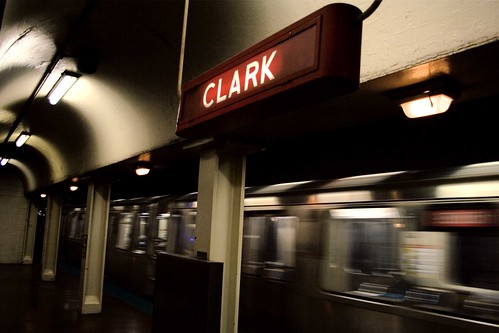When you talk about trains and Chicago, the first thing that pops into most peoples' minds is the elevated railroad, the famed 'L' trains that give the equally famed Loop it's name. Fewer people (who aren't locals, that is) know that there's also a subway system, two lines that dive below the streets to pick up and drop off Loop bound riders. Completed in 1943, the State Street Subway provided two new tracks, bypassing some of the slower sections above ground and allowing express trains for riders heading to outlying stations on the system. The Dearborn Street Subway would be started, but war shortages meant it remained incomplete, and it wouldn't open until 1951.
Both the State and Dearborn subways remain in use today, as part of the Red and Blue Lines respectively. Unlike their more ornate cousins in London and New York, the Chicago subways are relatively stark and functional-a product of their times, the early 1940's, as the world was plunging into war. Several have since been remodeled, but a few stops remain in their original form. Clark & Division is the second most northerly stop on the Red Line, and remains pretty much as it was when it opened, with plain white concrete arched ceilings, unadorned steel I-beam supports, and a red no-slip floor.
Clark also has a smattering of original signage, including a couple of these "Type F" illuminated station signs, which date from the station's opening in 1943. They feature bold Futura fonts, which was common to all the original signs in the subway, and lends an Art Deco feel to them. I always liked these signs, and they always caught my eye when I rode through Clark.
The only other Type F signs in the system are at Clinton, on the Blue Line.
Wednesday, October 27, 2010
Via Subway
Subscribe to:
Post Comments (Atom)

No comments:
Post a Comment